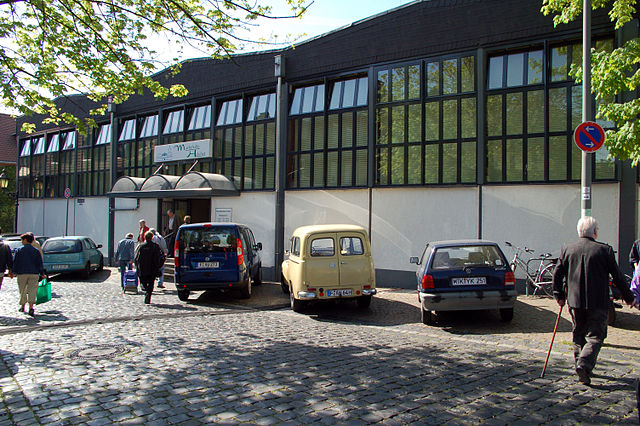The Hanseatic League was a medieval commercial and defensive network of merchant guilds and market towns in Central and Northern Europe. Growing from a few North German towns in the late 12th century, the League expanded between the 13th and 15th centuries and ultimately encompassed nearly 200 settlements across eight modern-day countries, ranging from Estonia in the north and east, to the Netherlands in the west, and extended inland as far as Cologne, the Prussian regions and Kraków, Poland.
Northern Europe in the 1400s, showing the extent of the Hanseatic League
Ubena von Bremen, a replica of the Bremen cog
Hanseatic Seal of Elbing (now Elbląg)
The Holstentor of Lübeck, built in 1464, is the only historic gate of the city still standing today.
A market town is a settlement most common in Europe that obtained by custom or royal charter, in the Middle Ages, a market right, which allowed it to host a regular market; this distinguished it from a village or city. In Britain, small rural towns with a hinterland of villages are still commonly called market towns, as sometimes reflected in their names.
The market square of Shrewsbury, an English market town
The market square (Marktplatz) of Wittenberg, a marked town in Germany
Market cross in a market, French, c.1400
Modern market hall in Frankfurt-Höchst, where the market dates back to at least 1356








